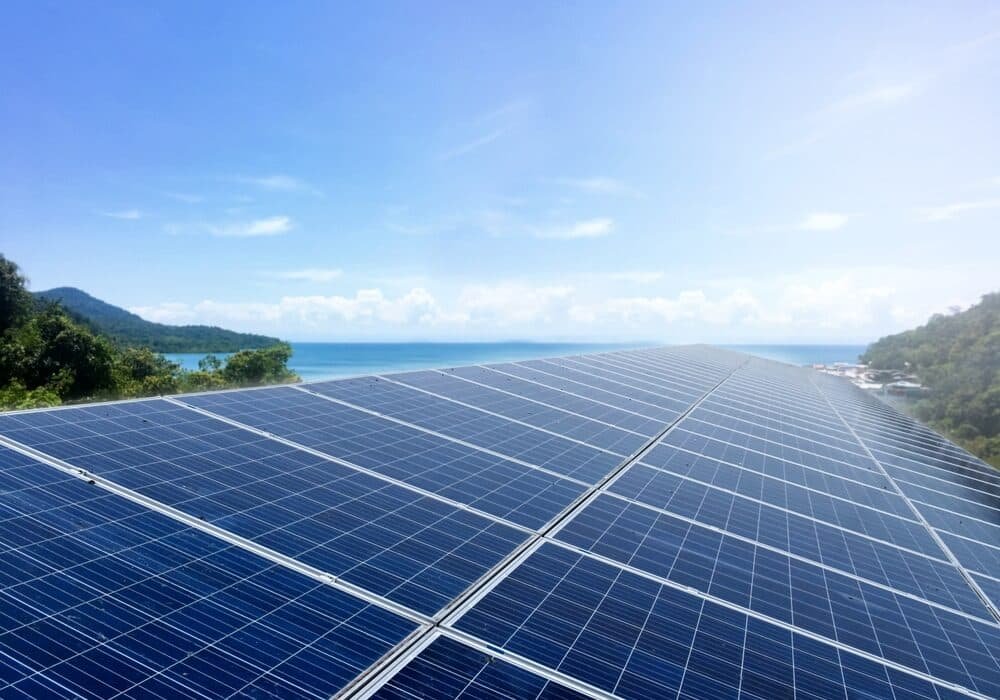Limasawa Island, a tiny but historically rich community in Southern Leyte, is set to benefit from whole-day electricity. This improvement comes through a solar power initiative led by the Philippine National Oil Company (PNOC), bringing sustainable energy to the island’s residents.
According to Oliver Bulatid, President and CEO of the Philippine National Oil Company, funding has been allocated for the development of a 100-kilowatt solar farm on Limasawa Island to ensure residents have access to a reliable and consistent power supply.
The initiative is part of PNOC’s “Bright Islands Project,” which aims to install solar lighting in 14 islands, including Limasawa. Butalid said that the program is designed “to lessen the cost of producing electricity and help the environment through reducing carbon emission”, with implementation targeted for either the second quarter or early next year.
The project will be carried out in partnership with the National Power Corporation (Napocor), which currently operates diesel plants on these islands and supplies power to local electric cooperatives.
Affordable electricity in underserved areas is the goal of the project, Butalid noted, adding that the initiative is intended to drive economic growth and development in remote island communities.
(Also read: Visayan Electric Cuts Rates by P0.49/kWh for March-April)
Past solar initiatives in Limasawa
Solar power is not new to the island, which has long relied on diesel. Back in 2018, the National Power Corporation broke ground on a ₱54-million, 120-kilowatt solar project awarded to Power Dimension Inc.
A year later, the Roman Catholic Diocese of Maasin, along with its donors, funded infrastructure projects on Limasawa Island to mark the 500th anniversary of the First Mass in Asia. Among the initiatives was the installation of 500 solar lamp posts across the island.
When Typhoon Odette struck the Visayas in December 2021, it devastated Limasawa Island, causing 90% damage to its farmlands, coastal livelihoods, and essential facilities. Vital structures—including the seaport and government buildings—were heavily damaged.
The NAPOCOR-SPUG hybrid solar-diesel power plant, which had provided 24/7 electricity, lost its solar panels in the storm, leaving residents near the town center without power until February 2022. In remote barangays like San Agustin where Limasawa is located, electricity restoration took even longer.
To address these challenges, several NGOs donated small solar lamps to families affected by Typhoon Odette. The support also included a 200-watt solar-powered community charging station provided by the Institute for Climate and Sustainable Cities (ICSC) and 350 Pacific.
(Also read: Daanbantayan Embraces Renewable Energy with P7.5-B Solar Project)
About Limasawa
Limasawa Island, located off the southern tip of Leyte in the Philippines, holds significant historical importance as the site of the first recorded Roman Catholic mass in the country, celebrated on March 31, 1521, by Ferdinand Magellan’s expedition. This event marked the introduction of Christianity to the Philippines.
The island, officially established as a municipality in 1978, comprises six barangays and has a population of approximately over 6,000 people. Limasawa’s economy is primarily based on subsistence agriculture and fishing, reflecting its rural character.
Beyond its historical significance, Limasawa offers natural attractions, including pristine beaches, coral reefs, and hiking trails leading to panoramic viewpoints. Visitors can explore the First Mass Shrine and the Magellan’s Cross replica, commemorating the island’s role in Philippine history.
Sources:
https://www.manilatimes.net/2025/04/07/regions/limasawa-island-to-get-solar-lights/2087248
https://www.pna.gov.ph/articles/1036757
https://icsc.ngo/powering-limasawa-after-super-typhoon-odette/
https://www.pna.gov.ph/articles/1086408
https://www.britannica.com/place/Limasawa
https://en.wikipedia.org/wiki/Limasawa
https://eazytraveler.net/2023/03/limasawa-southern-leyte-travel-guide/


